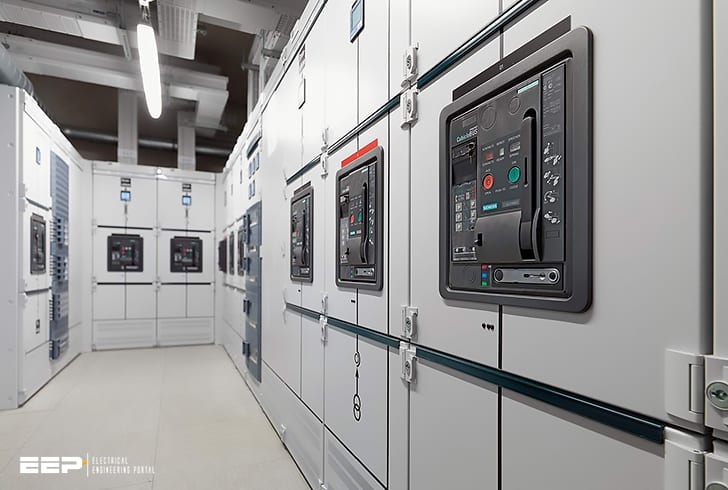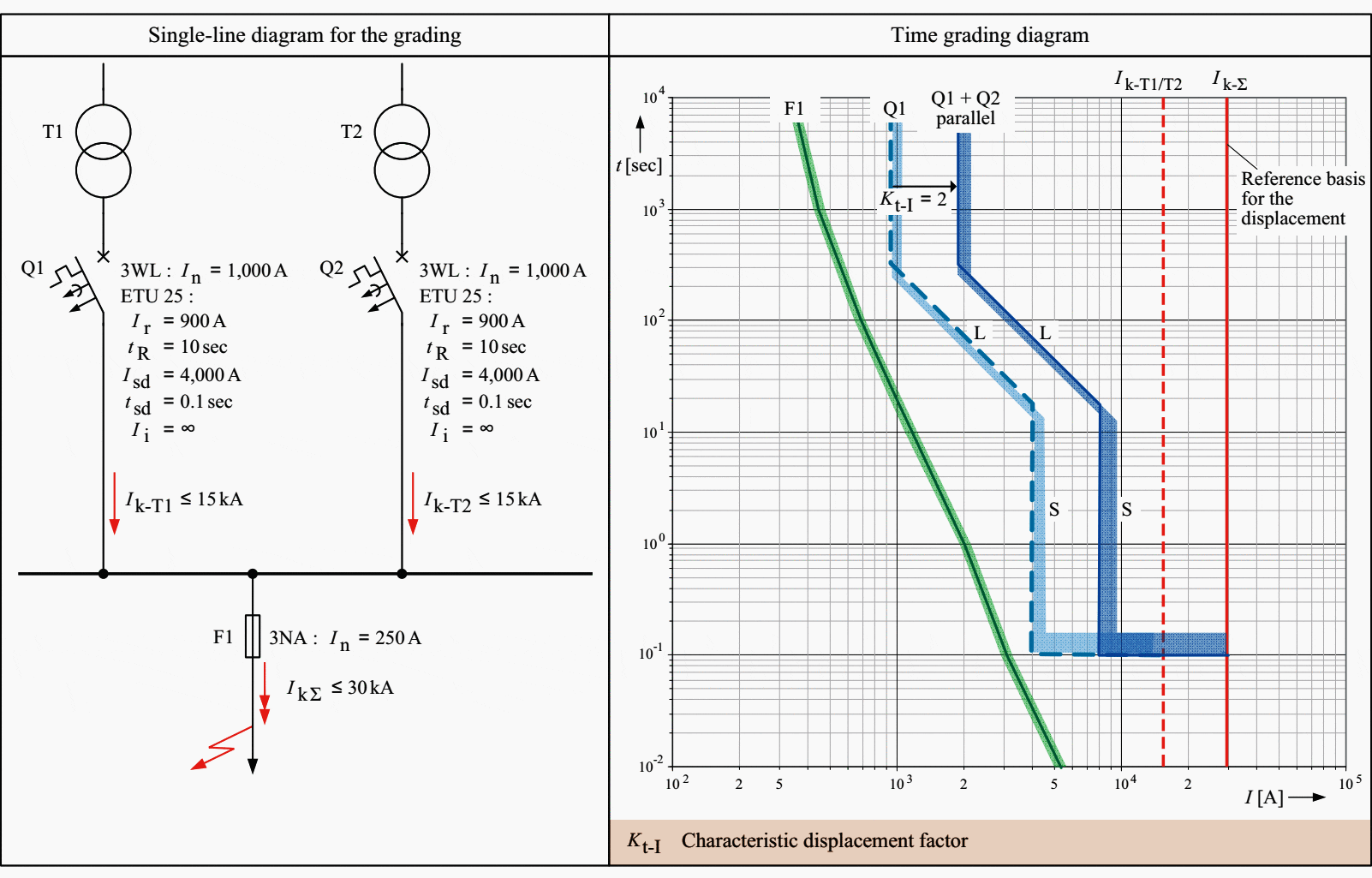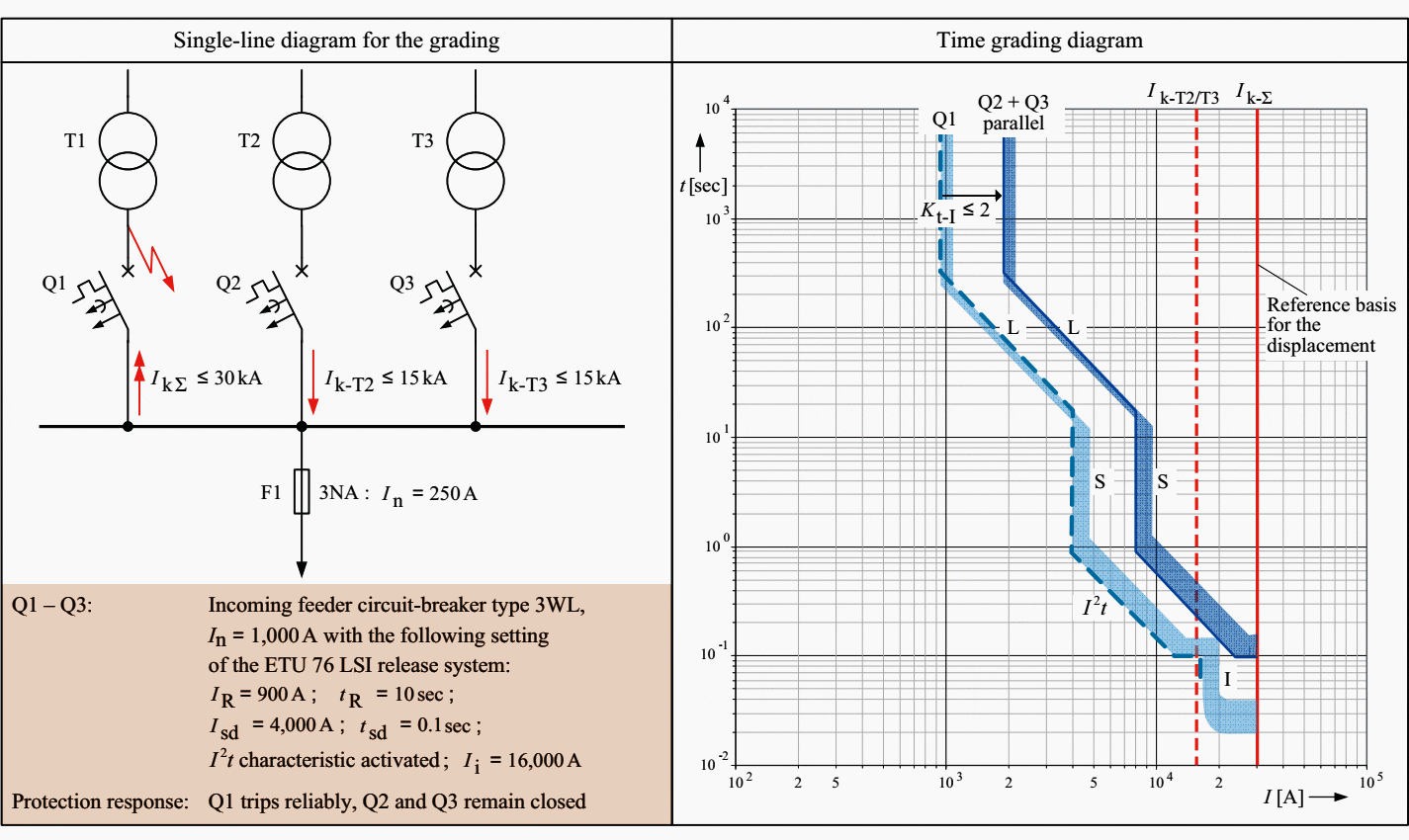
07 Oct The art of achieving selectivity between incoming feeders connected in parallel
Transformers in parallel operation
Calculating selectivity involving incoming lower voltage feeders linked in parallel was by no means an easy job. In parallel procedure of two, 3 and extra transformers on a typical busbar, the partial quick-circuit currents flowing in the specific incoming feeders increase up to the whole small-circuit recent in a defective feeder in which a disturbance has happened.
This overall brief-circuit present is the basis for the recent scale in the grading diagram.
Utilizing the present scale centered on the full limited-circuit present gives far more favourable selectivity conditions for all protective devices downstream of the incoming feeder circuit-breakers. This applies to all styles of fault.
Let’s see three conditions of accomplishing selectivity in between incoming circuit breakers related in parallel. Breakers are Siemens’s air kind 3WL. If you are not familiar with this breaker, get a glance at the limited introduction below.
- Two equivalent incoming feeders
- 3 equivalent incoming feeders
- Incoming feeders linked in parallel by way of bus coupler circuit-breakers
1. Two equivalent incoming feeders
Determine 1 aspects the distribution of quick-circuit currents in scenario of a fault on an outgoing feeder with two parallel-linked transformers of the exact electricity rating and the exact same duration of incoming feeder cables.
The full brief-circuit current IkΣ flowing by fuse F1 is composed of the partial brief-circuit currents Ik-T1 and Ik-T2.
Since the whole quick-circuit existing IkΣ in the postulated perfect circumstance (load feeder positioned precisely in the middle, disregarding the load current in other outgoing feeders) is divided similarly between the incoming feeders, the tripping attribute of circuit-breakers Q1 or Q2 can below permissibly be shifted by the characteristic displacement element Kt-I = 2 to the proper on the existing scale as much as the perpendicular IkΣ, the foundation for this fault case.
This change benefits in both time selectivity and an extra obtain in latest selectivity (see Figure 1).

If the incoming and outgoing feeders are organized and located asymmetrically on the busbar, the distribution of the brief-circuit present is various depending on the impedance ratio of the transformers and incoming feeders.
For the asymmetrical fault current distribution that usually happens in apply, the attribute displacement aspect Kt-I ought to be calculated as follows:

Go again to Written content Table ↑
2. 3 identical incoming feeders
An even improved latest selectivity is reached in the circumstance of a brief circuit on an outgoing feeder utilizing n = 3 parallel-connected transformers, considering that the attribute displacement factor for the incoming feeder circuit-breakers Q1, Q2 and Q3 is then in the assortment 2 < Kt-I ≤ 3 (for an idealized example, see Figure 2a).
To clear faults between the secondary-side transformer terminals and incoming feeder circuit-breaker fast, reliably and selectively, LSI releases (L = overload protection, S = short-time-delay overcurrent protection, I = instantaneous overcurrent protection) are used in incoming feeders.

The operating current Ii of the instantaneous overcurrent release (I release) must be set such that its value is above the partial short-circuit current Ik-Ti of a transformer.
This means that only that incoming feeder circuit-breaker carrying the total short-circuit current IkΣ ever trips instantaneously in case of a secondary-side terminal short circuit on the transformer.
The circuit-breakers in the faultless incoming feeders remain closed due to the delay time tsd set on the S release (for an example, see Figure 2b).

The selectivity example shown in Figure 2b is based on a perfectly symmetrical fault current distribution, that is, for the transformer circuit-breakers Q2 and Q3 in the faultless incoming feeders, a characteristic displacement factor of Kt-I = 30 kA/15 kA = 2 ideally applies.
Owing to differing fault impedances among multiple incoming feeders, however, asymmetrical fault current distributions are the rule. With sufficient damping by the fault impedance, the total short-circuit current IkΣ can be kept so small that instantaneous short-circuit tripping of the transformer circuit-breaker in the incoming feeder in which the fault occurred is no longer certain.
In such a case, all incoming feeders would trip simultaneously and non-selectively.
To prevent non-selective tripping on strongly differing fault impedances, incoming feeder circuit-breakers must be used whose S releases (short-time-delay overcurrent releases) exhibit an I2t-dependent tripping characteristic.
The gain in selectivity that can be achieved using S releases with an I2t-dependent tripping characteristic is shown in Figure 2c.

As a comparison of Figure 2c with Figure 2b shows, S releases with I2t-dependent tripping characteristics are notable for much enhanced current-time selectivity.
Go back to Content Table ↑
3. Incoming feeders connected in parallel through bus coupler circuit-breakers
Circuit-breakers with overcurrent releases are used as bus couplers to meet the following objectives:
- Fastest possible clearance of busbar faults,
- Fault restriction to the respective busbar section,
- Relieving the feeders of the effects of high total short-circuit currents.
With n = 2 parallel incoming feeders, only the partial short-circuit current of one transformer ever flows through the bus coupler. In this way, selectivity can only be achieved between the incoming feeder circuit-breaker and the coupler circuit-breaker by time grading. Only as from n ≥ 3 parallel incoming feeders are the partial short-circuit currents flowing through the bus couplers dependent on the fault location (fault in the outer or central busbar section).
Figures 3a, 3b and 4 show the protection response of the transformer and bus coupler circuit-breakers in the case of three parallel incoming feeders and faults (fault on the outgoing feeder, fault on the incoming feeder) in the outer and central busbar section.
Short circuit on an outgoing feeder of the outer busbar section
Selectivity relations in the case of three identical transformers connected in parallel through bus coupler circuit-breakers (short circuit on an outgoing feeder)

Short circuit on an outgoing feeder of the central busbar section
Selectivity relations in the case of three identical transformers connected in parallel through bus coupler circuit-breakers (short circuit on an outgoing feeder)

Q1 – Q3 – Incoming feeder circuit-breaker type 3WL, In = 1,000 A with the following setting of the ETU 76 LSI release system:
- IR = 900 A
- tR = 10 sec
- Isd = 4,000 A
- tsd = 0.2 sec
- I2t characteristic activated
- Ii = 16,000 A
Q4, Q5 – Bus coupler circuit-breaker type 3WL, In = 1,000 A with the following setting of the ETU 76 LSI release system:
- IR = 800 A
- tR = 10 sec
- Isd = 3,000 A
- tsd = 0.1 sec
- I2t characteristic activated
- Ii = 32,000 A
Usually, further overcurrent protective devices are connected in series with the transformer and bus coupler circuit-breakers present in the multiple incoming supply of industrial LV networks.
For this reason, inclusion of the bus coupler circuit-breakers in the selective time grading may inappropriately lengthen the disconnecting time for near-to-infeed short circuits.
Secondary-side terminal short circuit on the transformer of the outer busbar section
Selectivity relations in case of three identical transformers connected in parallel through bus coupler circuit-breakers (terminal short circuit on one transformer)

Secondary-side terminal short circuit on the transformer of the central busbar section
Selectivity relations in case of three identical transformers connected in parallel through bus coupler circuit-breakers (terminal short circuit on one transformer)

Q1 – Q3 – Incoming feeder circuit-breaker type 3WL, In = 1,000 A with the following setting of the ETU 76 LSI release system:
- IR = 900 A
- tR = 10 sec
- Isd = 4,000 A
- tsd = 0.2 sec
- I2t characteristic activated
- Ii = 16,000 A
Q4, Q5 – Bus coupler circuit-breaker type 3WL, In = 1,000 A with the following setting of the ETU 76 LSI release system:
- IR = 800 A
- tR = 10 sec
- Isd = 3,000 A
- tsd = 0.1 sec
- I2t characteristic activated
- Ii = 32,000 A
Because there are often economic reservations against the use of zone-selective interlocking (ZSI), the S releases of the transformer and bus coupler circuit-breakers are no longer time-graded instead.
In addition to setting identical time delays tsd, it is also usual to dispense with overcurrent releases in the busbar couplings altogether.
Go back to Content Table ↑
Sources: Planning Guide for Power Distribution Plants by Dr.-Ing. Hartmut Kiank and Dipl.-Ing. Wolfgang Fruth (Siemens)
[ad_2]
Source link


No Comments